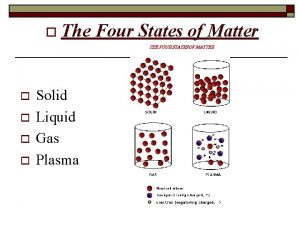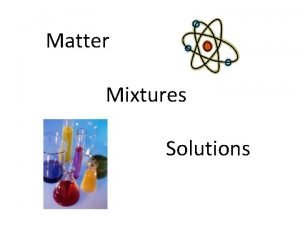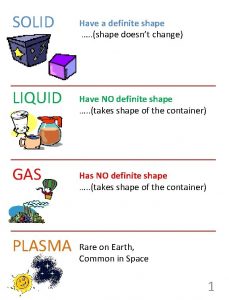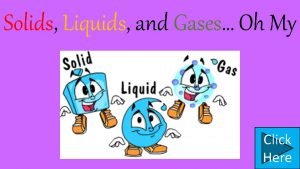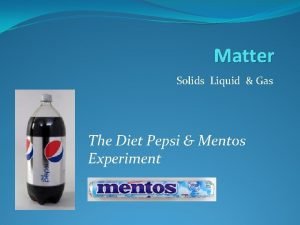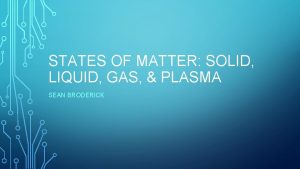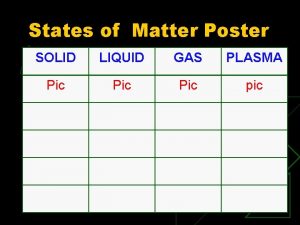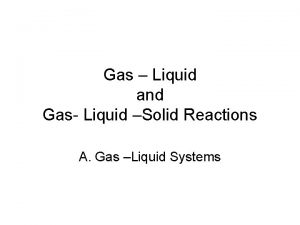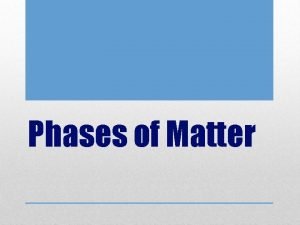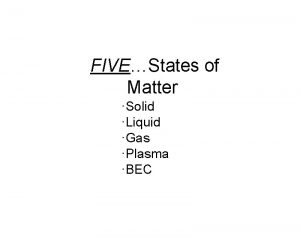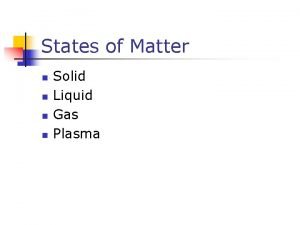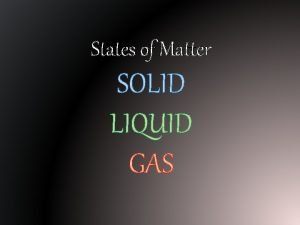States of Matter Notes Solid Liquid Gas Plasma








- Slides: 8

States of Matter Notes Solid Liquid Gas Plasma

EQ: How do the states of matter show up in different forms?

Matter ● All matter takes up space (volume) and has mass. ● Kinetic Theory of Matter: All matter is made of particles (atoms or molecules) and those particles are always moving. ● The state that matter is found in depends on the temperature (amount of energy) and pressure.

Solids ● ● ● Particles vibrate slowly in a fixed position. Particles packed close together. Holds its shape (definite shape) – ● Volume does not change (definite volume). – ● ● It does not flow. It cannot be squeezed into a smaller space or expand into a bigger space without changing the temperature. Crystal solids: Hold their shape well. Atoms are arranged in a repeating geometric pattern. Amorphous solids: do not hold shape well. Atoms have no pattern. Like a slow moving liquid. – Rubber, glass, clay, Jell-O, etc.

Liquids ● ● Particles move fast and are free to move around. Particles still packed close like in solid, but are able to flow or move freely. Takes on shape of its container. (no definite shape) – Has the ability to flow. Volume does not change (definite volume). – It cannot be squeezed into a smaller space or expand into a bigger space without changing the temperature.

Gasses ● ● Particles move very fast freely in all directions. Lots of space between particles. – ● Takes on the shape of its container. – ● Has the ability to flow. (No definite Shape) Volume changes (No definite volume). – It can expand or contract to take up the space available.

Plasma ● Is a gas like mixture of positively and negatively charged particles. – ● ● (protons and electrons) Produces light (different gases produce different colors) Most common state in the universe. Form at extreme temperatures or with electric current. Examples: Sun, Stars, Fluorescent lights, TV’s

States of Matter Song
